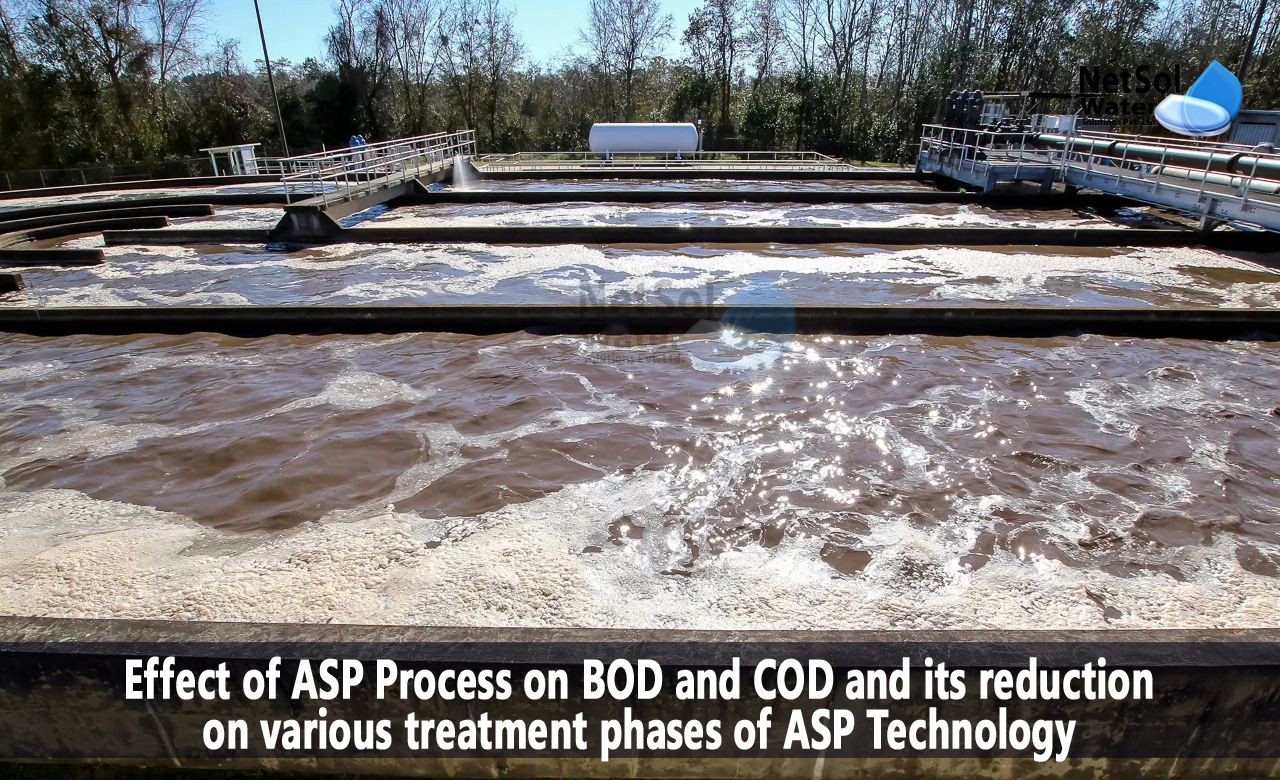Effect of ASP Process on BOD and COD and its reduction
Wastewater treatment is a crucial process that aims to reduce the amount of pollutants present in wastewater before it is discharged into the environment. The activated sludge process (ASP) is one of the most widely used biological treatment technologies for wastewater treatment. ASP involves the use of microorganisms to break down organic matter in wastewater.
Let’s discuss the percentage of biochemical oxygen demand (BOD) and chemical oxygen demand (COD) resolved from ASP and how it can be controlled or reduced in different stages of the ASP process.
Activated Sludge Process:
In ASP, wastewater is combined with "activated sludge," a collection of microorganisms, in a sizable aeration tank. By continually aerating the tank, which gives the microorganisms oxygen to use for decomposing the organic waste, the activated sludge is a mixture of microorganisms that are kept in suspension.
As the microorganisms in the activated sludge consume the organic matter in the wastewater, they grow and multiply, forming clumps known as "flocs".
These flocs separate from the treated wastewater when they settle out of the wastewater in a clarifier or settling tank. While the surplus sludge is removed from the process and further cleaned for disposal or reuse, some of the settled sludge is recycled back into the aeration tank to supply a new supply of microorganisms.
BOD and COD Reduction at various Treatment Stages.
The percentage of BOD and COD reduction achieved by the ASP technology depends on several factors such as:
· Type of wastewater being treated,
· Operating conditions,
· Process design.
Generally, ASP technology can achieve a BOD reduction of 85-95% and a COD reduction of 70-90%.
The ASP process consists of four different stages, each of which contributes to the overall reduction in BOD and COD. The reduction at various treatments are given below:
Physical Treatment:
Physical treatment is the first stage in the wastewater treatment process. It involves the removal of large solids and debris from the wastewater using physical methods such as screening, sedimentation, and flotation.
Physical treatment has little to no effect on BOD and COD reduction. However, it helps to protect downstream treatment processes by preventing large particles from clogging pipes and equipment.
Primary Treatment:
Primary treatment is the second stage of wastewater treatment, and it involves the removal of settleable and floatable solids from the wastewater. This is achieved through the use of sedimentation tanks, where heavy solids settle to the bottom and are removed as sludge.
Primary treatment can reduce BOD and COD by 20-30%, but it is not effective at removing dissolved organic matter.
Secondary Treatment:
Secondary treatment is the core of the ASP process and involves the use of microorganisms to break down organic matter in wastewater. The microorganisms are suspended in the wastewater and form a sludge that is continuously mixed and aerated. The aeration provides the microorganisms with oxygen to facilitate their metabolic activity, leading to the breakdown of organic matter.
Secondary treatment can reduce BOD and COD by up to 90%.
Tertiary Treatment:
Tertiary treatment is the final stage of wastewater treatment, and it involves the removal of residual contaminants from the wastewater. Tertiary treatment can include processes such as filtration, adsorption, and disinfection.
These processes can reduce BOD and COD by an additional 5-10%. However, tertiary treatment is not always required, and its application depends on the quality of the effluent required for discharge.
Controlling BOD and COD in ASP:
Controlling and reducing BOD and COD in ASP requires careful management of the wastewater treatment process. The following are some of the ways in which BOD and COD can be controlled or reduced in ASP:
Aeration Control: Aeration is essential for the ASP process, as it provides oxygen for the microorganisms to break down organic matter. However, over-aeration can lead to the formation of nitrates and nitrites, which can negatively impact the environment. Therefore, aeration should be carefully controlled to ensure that the microorganisms have enough oxygen to function without producing excess nitrates and nitrites.
Sludge Age Control: Sludge age is the length of time that microorganisms remain in the wastewater treatment system. Controlling the sludge age can help to ensure that the microorganisms are functioning optimally and that the ASP process is operating efficiently.
Nutrient Control: Microorganisms require nutrients such as nitrogen and phosphorus to function effectively. Controlling the amount of nutrients supplied to the system can help to ensure that the microorganisms are not overfed, which can lead to excess biomass production and poor effluent quality.
pH Control: The pH of the wastewater can impact the ASP process. If the pH is too low or too high, it can negatively impact the microorganisms' ability to function. Therefore, pH should be carefully monitored and controlled to ensure that it remains within the optimal range for the microorganisms.
Conclusion:
In summary, the ASP process can achieve significant reductions in both BOD and COD, with the majority of the reduction occurring in the secondary treatment stage. The overall reduction can be improved by optimizing the process design and operating conditions and by implementing additional tertiary treatment processes.
Leading manufacturer of sewage treatment plants in India
Netsol Water is the leading manufacturer, supplier, and exporter of a quality selection of water treatment, and wastewater treatment products in India, by using advanced sewage treatment methods.
RO plants, water softeners, ETPs, STPs, DM plants, AMC, O&M, Ultra filtration, UV, Ozonation, ZLD plants, Anoxic tanks, and other goods and services are available from us. We also provide services to businesses in sectors including automotive, pharmaceutical, textile, pulp & paper, beverages, refineries, schools, hospitals, office buildings, and hotels, among others.
Call us at +91 9650608473 or email at enquiry@netsolwater.com for further information.



